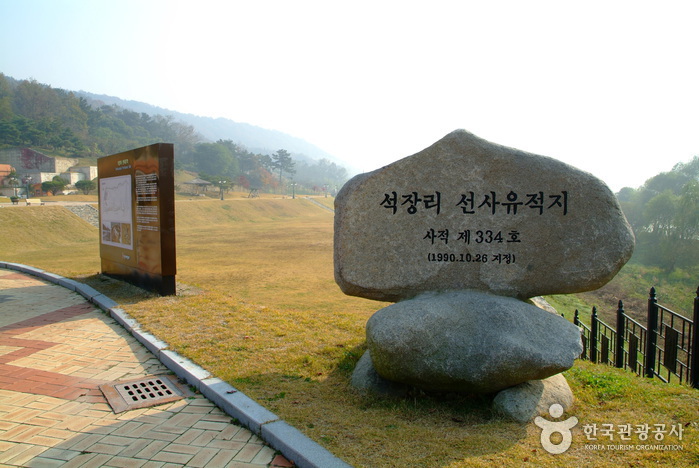Himart - Techno Valley Branch [Tax Refund Shop] (하이마트 테크노밸리점)
10.5 Km 0 2024-04-18
31, Techno jungang-ro, Yuseong-gu, Daejeon
-
Indy (인디)
10.5 Km 2559 2024-03-20
202, 32 Techno jungang-ro, Yuseong-gu, Daejeon
Indy is an authentic Indian restaurant. The chef, with 15 years of experience in hotel kitchens, uses over 20 types of natural spices to flavor the dishes. Chicken makhni, known for its rich cream and butter taste, is the signature dish. Another popular item is the prawn chilli, featuring large shrimps in a spicy chili sauce. The warm nan bread and salads complement the curries perfectly. The restaurant also boasts stylish Indian-inspired decor.
Doan-dong Gamnamujip (도안동 감나무집)
10.7 Km 10446 2024-03-28
54 Techno jungang-ro, Yuseong-gu, Daejeon
Doan-dong Gamnamujip, situated near Daedeok Techno Valley, stands out as a restaurant dedicated to duck dishes. Their diverse menu includes options like ori suyuk (boiled duck slices), nurungji baeksuk (whole chicken soup with scorched rice), and oritang (duck soup). Among these, the ori suyuk, celebrated for its tender texture and balanced fat content, holds particular popularity. Savoring it wrapped in lettuce with the accompanying seasoning sauce enhances the delightful experience.
Jeju Bakdonga (제주박돈가)
10.9 Km 3073 2024-02-23
52 Gwandeul 2-gil, Yuseong-gu, Daejeon
Jeju Bakdonga is a restaurant renowned for its Jeju Island black pork, with the signature dish being heukdwaeji ogyeopsal gui (grilled skin-on black pork belly). Known for its juicy and chewy texture, the pork is served with ample portions of green onion kimchi and a refreshing green onion salad. For an authentic Jeju experience, guests are encouraged to try dipping the meat in salted anchovies, a local custom. Additionally, the restaurant serves a satisfying beef hangover soup, vegetables for wraps, garlic, and a selection of sauces. The kimchi jjigae, a highlight of their lunch special menu, is also highly recommended.
Shanghai Yangkkochi (상하이양꼬치)
10.9 Km 4180 2024-03-28
72-9 Gwandeul 2-gil, Yuseong-gu, Daejeon
Shanghai Yangkkochi specializes in yang kkochi (lamb skewers). The restaurant's signature yang kkochi is grilled over charcoal, offering the delightful experience of cooking and eating them one by one. Another unique delicacy is unpeeled maneul kkochi (garlic skewers). The restaurant also features tender and savory yang galbi (lamb chops), as well as spicy and pungent mala tang (mala soup). Each order is accompanied by a gochu ganjang sauce (chili pepper and soy sauce) and roasted peanuts as standard.
Banseok Hanuchon (반석 한우촌)
11.0 Km 2797 2024-02-13
56 Banseok-ro 12beonan-gil, Yuseong-gu, Daejeon
Banseok Hanuchon is a restaurant specializing in hanu (Korean beef), renowned for its tender texture. The menu boasts a variety of cuts, including sirloin, chuck flap tail, thin skirt, and inside skirt. At an affordable price, customers can enjoy a hearty meal with a variety of fresh vegetables for wraps and diverse side dishes. Additionally, fresh yuk sashimi (sliced raw beef) and yukhoe (beef tartare) are available, and their galbitang (galbi soup) and bulgogi jeongol (bulgogi hot pot) stand out as popular choices.
Solbat Mukjip (솔밭묵집)
11.1 Km 7 2024-02-14
51 Gwanyong-ro, Yuseong-gu, Daejeon
Solbat Mukjip is a restaurant celebrated for its 40-year tradition in crafting dotorimuk (acorn jelly salad), a culinary specialty of Daejeon. The city is so famed for its acorn jelly that it hosts an acorn jelly village. The restaurant's standout dish is chaemuk (chilled acorn jelly and rice soup), a delightful blend of chopped acorn jelly immersed in broth and garnished with sour chopped kimchi, sesame oil, laver flakes, and roasted sesame powder. The combination of the nutty acorn jelly salad with the tangy broth creates a uniquely delicious flavor. Additionally, the thinly batter-fried acorn jelly is a popular choice. This dish is served with a side of refreshing radish water kimchi and other accompaniments.
Wando Susan (완도회수산)
11.2 Km 2838 2024-02-13
10 Banseok-ro, Yuseong-gu, Daejeon
Wando Susan is a seafood specialty restaurant acclaimed for its fresh hwareo hoe (sliced raw fish). The establishment provides an array of course menu and a la carte options. The hwareohoe course features locally sourced fish, including flatfish and rockfish, accompanied by side dishes, fresh vegetables for wraps, and various other delectable offerings. A la carte items, such as butter-grilled abalone, spicy altang (spicy fish roe soup), and chobap (sushi), are also popular.
63beon-gil (63번길)
11.2 Km 0 2024-02-28
21 Gwanyong-ro 63beon-gil, Yuseong-gu, Daejeon
63beon-gil is a Korean restaurant situated near Daedeok Techno Valley, renowned for its gomtang (beef bone soup). This soup is crafted by simmering Korean beef brisket and chuck eye roll for an extended duration. The menu showcases various dishes incorporating Korean beef, such as gomtang, yukhoe (beef tartare), and yukhoe bibimbap (beef tartare bibimbap). Moreover, the establishment features a gallery and café on the second floor for visitors to enjoy.
Archaeological Site in Seokjang-ri, Gongju (공주 석장리 유적)
11.3 Km 33129 2021-07-17
990, Geumbyeok-ro, Gongju-si, Chungcheongnam-do
+82-41-840-8924
The Archaeological Site in Seokjang-ri, Gongju is located approximately 6 kilometers out of the city of Gongju, on the northern banks of the Geumgang River. The site is one of Korea's representative relic sites of the Old Stone Age, and is designated Historic Site No. 334. The site was excavated 10 times between 1964 and 1974 by teams from Yonsei University Museum. The excavation of 27 layers of stratum produced relics proving people lived in the area through 11 cultural eras. The area was excavated again in 1990 and 1993, producing even more cultural artifacts and helping to create a clearer image of the people living in that time.
![Himart - Techno Valley Branch [Tax Refund Shop] (하이마트 테크노밸리점)](http://tong.visitkorea.or.kr/cms/resource/25/2883525_image2_1.jpg)


 English
English
 한국어
한국어 日本語
日本語 中文(简体)
中文(简体) Deutsch
Deutsch Français
Français Español
Español Русский
Русский